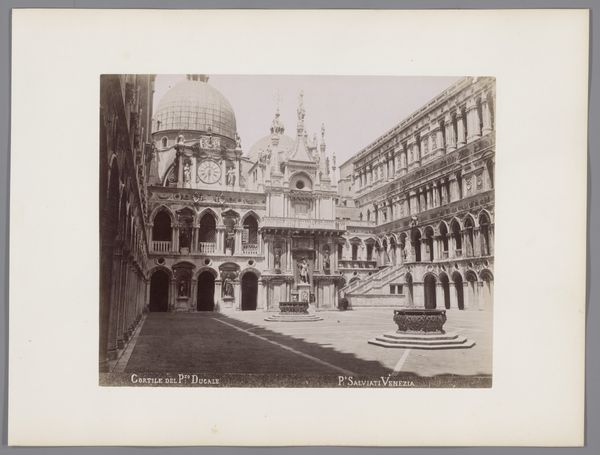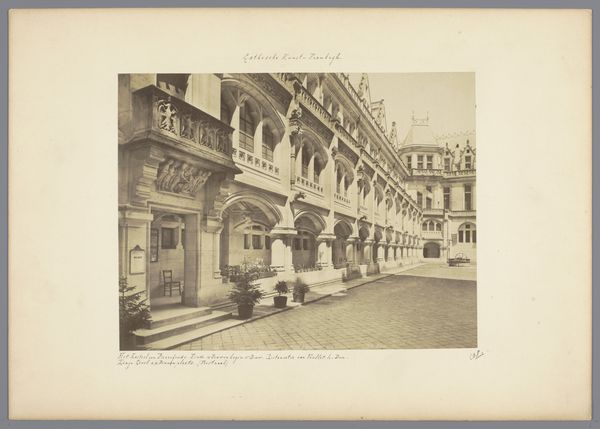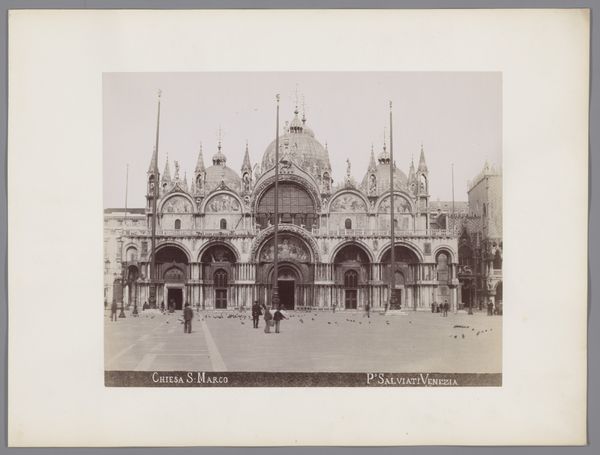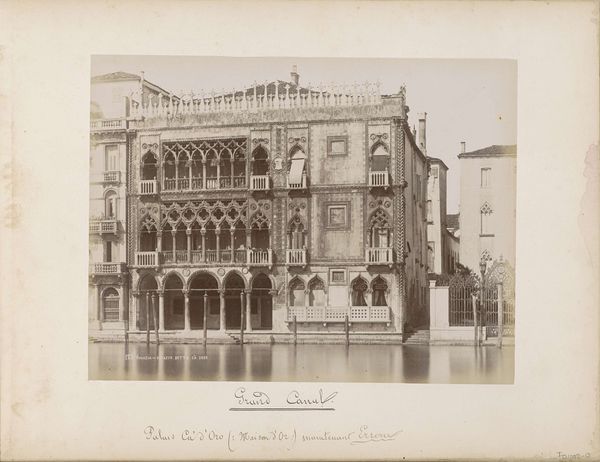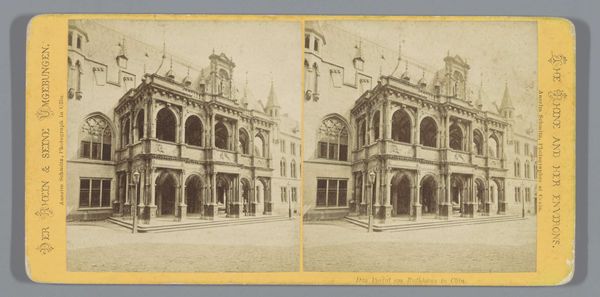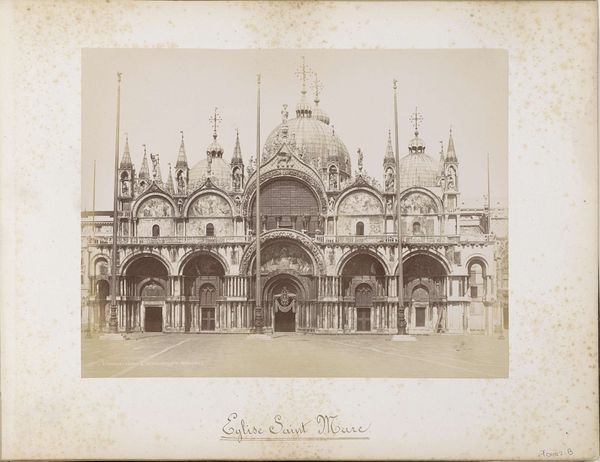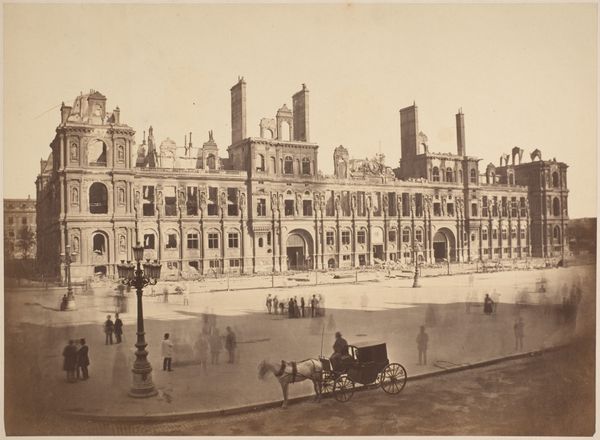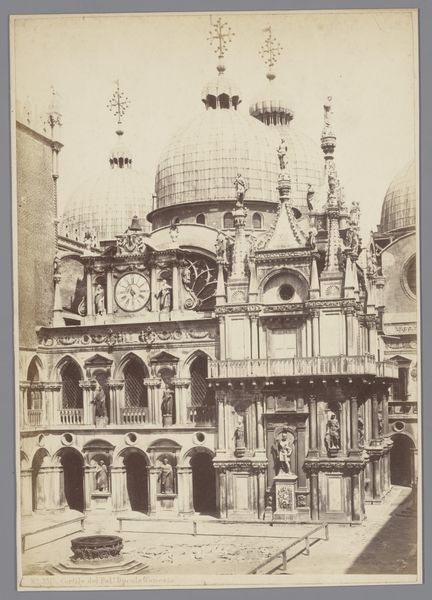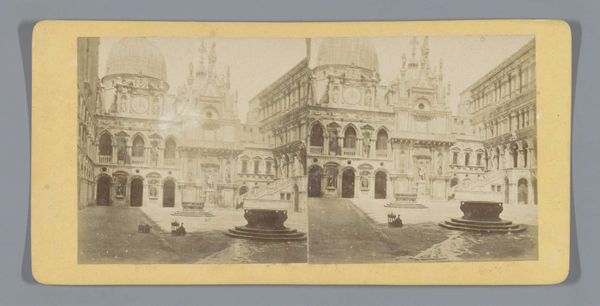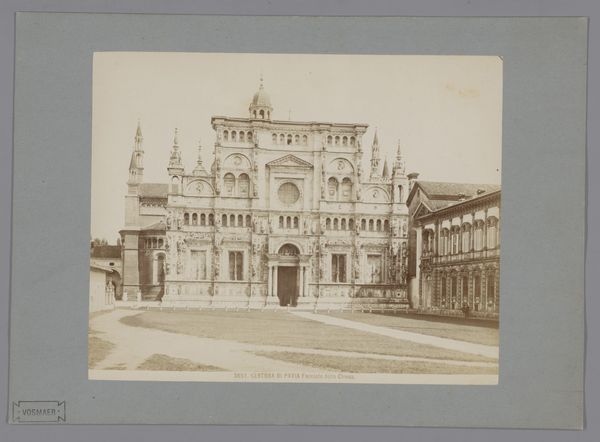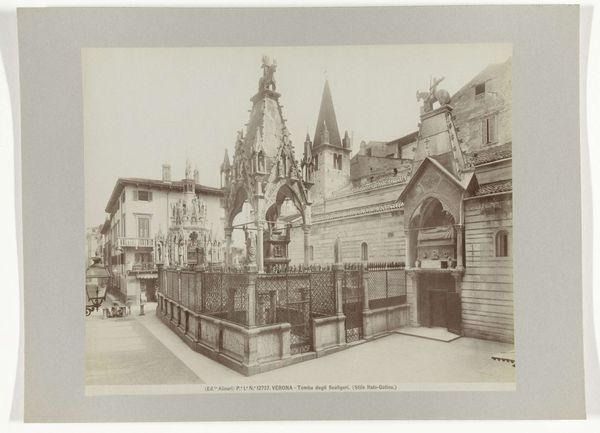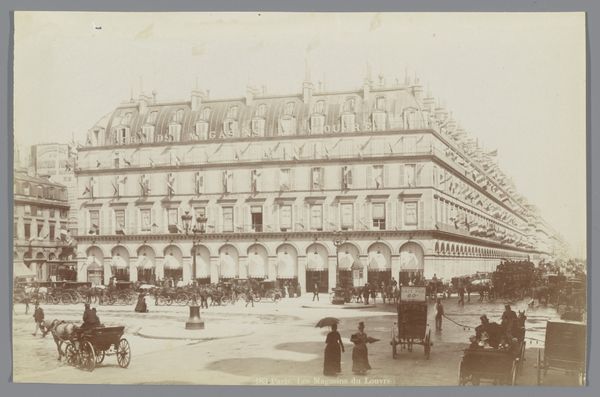
Dimensions: height 199 mm, width 260 mm
Copyright: Rijks Museum: Open Domain
Curator: Right, let's talk about Carlo Ponti's photograph, "Courtyard of the Doge's Palace in Venice." He captured this between 1860 and 1881. It's an albumen print, mounted on a card, a common practice then. Editor: My first impression is stillness. Despite all the architectural grandeur, there's a strange quiet about it, almost dreamlike. It feels more like a stage set than a bustling courtyard. What grabs you? Curator: It’s the way Ponti uses light. Notice how it rakes across the stone, highlighting the intricate details of the Doge’s Palace. These light effects contribute to the photo's quiet theatricality as you noted. Editor: Exactly! It’s as if he's arranging reality for our gaze. Makes you wonder about the politics of image-making even back then. Did Ponti try to erase signs of modern life from the frame? I suspect the aim wasn't purely documentary. Curator: Indeed. Venetian painting was highly idealized at this point in history. Ponti likely taps into that yearning for the city’s bygone power, making the space feel somewhat devoid of everyday life or struggle, more like a postcard image of glory. It’s almost haunting, like a ghost of Venice past. Editor: The placement of those wells—or are they cisterns?—foregrounded also speaks volumes. In the actual Doge's palace the wellheads would have played important social functions, places of gathering and exchange, sources of fresh water, but Ponti's version reduces them to architectural details that reinforce spatial organization. What is more, Ponti would have had to negotiate the site, set up the gear, prepare chemicals, deal with light, and make the prints…a lot of material negotiation went into this seemingly smooth image. Curator: Good point about the wells! Ponti, through photography, shapes our very perception of Venetian identity. So much in a simple click and a bit of chemistry, and all from someone with his feet firmly on the ground but his eye in a grand, timeless artistic lineage. Editor: Which leads us to wonder, how does something change when translated into another medium and filtered through another personality and ideology. Thanks for illuminating this beautiful photo with fresh perspective, it made me appreciate and consider Ponti's choices. Curator: And you pointed out the historical, and cultural weight such images carries so deftly—thanks to you as well.
Comments
No comments
Be the first to comment and join the conversation on the ultimate creative platform.
